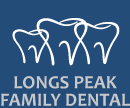X-Rays:
Dental x-rays are pictures of the teeth, bones and soft tissues around them to help find problems with the teeth, mouth and jaw. X-ray pictures can show cavities, hidden dental structures (wisdom teeth) and bone loss that cannot be seen during a visual examination. Dental x-rays may also be done as follow up after dental treatments. X-rays use small amounts of radiation exposure. Dental x-rays are scheduled when you need them based on your age, risk for disease and signs of disease.
Bitewing X-rays show the upper and lower back teeth and how the teeth touch each other in a single view. These x-rays are used to check for decay between the teeth and to show how well the upper and lower teeth line up. They also show bone loss when severe gum disease or a dental infection is present. Bitewing x-rays are primarily used during checkups to look for tooth decay.
Periapical X-rays show the entire tooth, from the exposed crown to the end of the root and the bones that support the tooth. These x-rays are used to find dental problems below the gum line or in the jaw, such as impacted teeth, abscesses, cysts, tumors and bone changes linked to some diseases.
Occlusal X-rays show the roof or floor of the mouth and are used to find extra teeth. This includes teeth that have not yet broken through the gums, jaw fractures, a cleft in the roof of the mouth called cleft palate, cysts, abscesses or if necessary, foreign objects.
FMX (full mouth veriex series) X-rays is a series of about 14 - 21 films. The series is most often done during a person's first visit to the dentist. It is used as a baseline for necessary dental work planning and status of initial dental conditions.
Diagnosis:
Snoring Snoring is caused by various reasons like apnea, malformations of teeth or mouth, obesity, allergies or breathing problems among others. Dental snoring devices are useful in the treatment of snoring especially those set off by apnea. Snoring happens when the throat muscles relax at the point where all the air passages inside meet and vibrate. This can also be due to the positioning of the head or neck. Dental snoring devices, also called Mandibular advancement devices, will position the lower jaw forward and prevent the tongue from blocking the air passage, which causes the snoring vibration.
Dr. Hartigan can help you identify the cause of the snoring and recommend a solution to fit your needs.
Scaling and Root Planing  Scaling
is the process of removing dental tartar from the surfaces of the teeth. Root planing is the process of smoothing
the root surfaces and removing any infected tooth structure. If you have gum disease or gum pocketing, the gum pockets
around the teeth will have deepened, thereby allowing tartar deposits to form under the gum line. The two processes
tend to blur together since during the cleaning process, the dental worker scales away tartar and performs any necessary
root planing at the same time.
Scaling
is the process of removing dental tartar from the surfaces of the teeth. Root planing is the process of smoothing
the root surfaces and removing any infected tooth structure. If you have gum disease or gum pocketing, the gum pockets
around the teeth will have deepened, thereby allowing tartar deposits to form under the gum line. The two processes
tend to blur together since during the cleaning process, the dental worker scales away tartar and performs any necessary
root planing at the same time.
Any roughness can be planed away to result in a silky smooth surface. Depending on the depth of the pocket and severity of the root surface irregularity, Dr. Hartigan may wish to make the area numb so that the process is comfortable for you.
Don’t hesitate to discuss with our hygienist or Dr. Hartigan what options you have.
Personal Dental Hygiene Consultation:
Your smile is a very precious gift. At Longs Peak Family Dental, we want to help you and your family receive the very best dental treatment available so all your smiles are great!
We incorporate up-to-date technologies and procedures while maintaining personal care and concern for the comfort of each patient.
A wide range of procedures are available to your entire family as we want to focus on you and your whole family's health and happiness.
Our staff will assist you with any questions you may have about individual dental insurance plans. We will gladly answer your dental questions, whether they’re about simple dental hygiene or complicated dental implant costs. Your dental health is very important to us.


